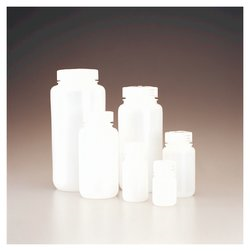TL/DR; Always safe because the bottle is not going to melt or poison you, but may be unwise because, depending on the type of plastic used, it could cause some warpage
Nalgene is a brand name/trademark not a material. All of these bottles are branded Nalgene ThermoFisher Scientific but you can see that they are made from a variety of plastics. Each of these is going to have a different profile.
HDPE is a common food safe plastic and its melting point is 120 °C so boiling water is not going to cause a catastrophic failure; however, it is a thermoplastic and the operating temperature is considered -50°C to +60°C Note that the ThermoFisher site rates their HDPE bottles to -100°C.
HDPE starts to soften around 64°C Vicat softening point, but 82°C is the limit that people have established before you risk warping ('boiling' water in coolers to cook corn)
Some have mentioned Tritan as a material. That is an Eastman trademark and it appears to be a co-polyester. There are several co-polyesters under that brand, but the melt temperature is much higher. The deflection temperature at 66 psi is generally above boiling so that is going to be able to maintain stability even with a sharp blow.
However, to maintain a seal, the container and the cap have to be different materials of different hardnesses. If this is not possible, they could use a gasket of pliable thermoplastic elastomer.
So the rigid tritan bottles should be good for holding boiling water as it cools, but you are going to have to take into account the lid material as well so caveat emptor.
HDPE or LDPE I wouldn't do straight boiling water because they are more liable to deform, especially if you squeeze or otherwise apply a force. Let it cool down to 82°C and you should be fine.
Of note, dishwasher safe has no bearing on the ability to hold boiling water (other than if it is not dishwasher safe, it is definitely not safe for boiling water). The water in dishwashers should max at 65°C (150°F)--which is a notable point for HDPE btw--but well below boiling

